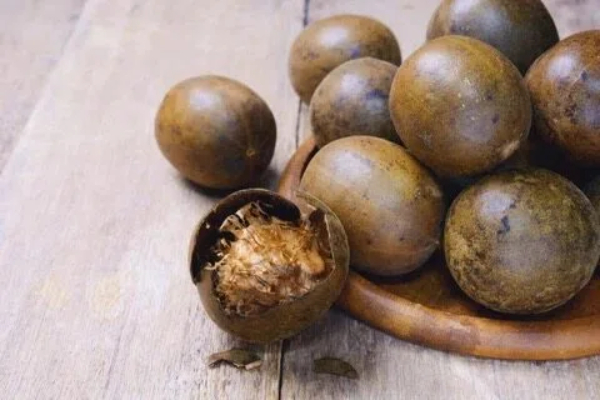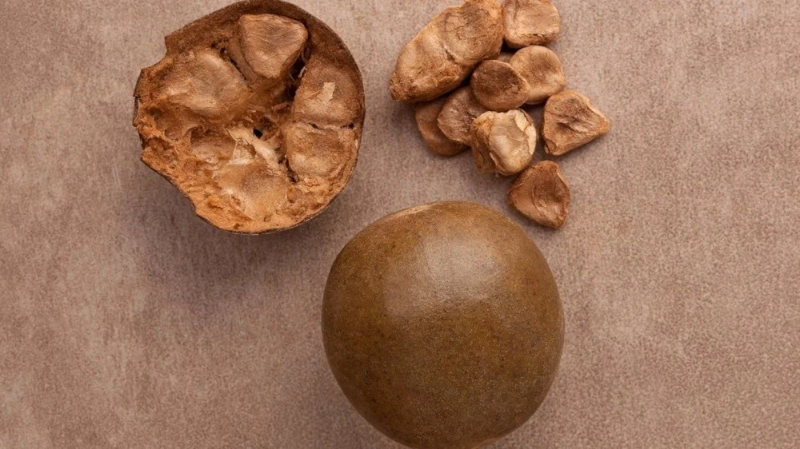







Content Menu
● What is Monk Fruit? A Comprehensive Overview
● Nutritional Profile, Safety, and Quality
● Monk Fruit in Diabetes Management, Weight Control, and Metabolic Health
● Safety, Allergens, and Individual Variability
● Commercial and Formulation Considerations for OEM/ODM
● Monk Fruit vs Other Natural Sweeteners
● Sensory and Culinary Insights
● Practical Implementation in Your Industry
● The Case for Monk Fruit in a Corporate Portfolio
● Common Misconceptions and Clarifications
● FAQ
>> 1. What exactly is Monk Fruit and how does it function as a sweetener?[10]
>> 2. Is Monk Fruit safe for people with diabetes?[7]
>> 3. Can Monk Fruit cause allergic reactions?[11]
>> 4. Do all Monk Fruit products contain zero calories?[1]
>> 5. How should Monk Fruit be labeled in commercial products?[11]
Monk fruit, also known as luo han guo, has emerged as a natural, zero- or near-zero calorie sweetener derived from a small fruit native to southern China. For manufacturers serving the food, beverage, and healthcare industries, monk fruit provides a compelling option to reduce added sugars while preserving sweetness and mouthfeel. This article investigates the benefits, limitations, safety considerations, and practical applications of Monk Fruit in commercial formulations, while highlighting how your factory's strengths in Natural sweetener、Functional polyols and dietary fiber can support Overseas manufacturer through blended sweetener development, tablet production, and OEM/ODM services. Throughout, the focus remains on how Monk Fruit can integrate with other functional ingredients to deliver health-forward products without compromising taste, texture, or brand integrity.[10][11][12]

Monk fruit is a small, warted gourdfamily fruit whose sweetness comes primarily from mogrosides, a group of glycosides that can be up to hundreds of times sweeter than sucrose. The pure mogroside compounds provide intense sweetness with little to no caloric contribution, making Monk Fruit an attractive candidate for clean-label formulations. In commercial practice, monk fruit sweeteners are often blended with bulking agents such as sugar alcohols or fibers to mimic sugar's texture, mouthfeel, and bulk, thereby achieving a sugar-like experience in foods and beverages. Regulatory bodies in multiple regions have recognized the safety of monk fruit sweeteners, granting favorable approvals or GRAS status when used as directed. This integration with other ingredients—bulking agents, fibers, and polyols—forms the core of OEM/ODM opportunities for your factory, enabling co-developed products with stable supply chains and transparent labeling.[2][7][12]
- Calorie and carbohydrate considerations: Monk fruit sweeteners contribute minimal to no calories and carbohydrates, aligning with consumer demand for low- or zero-calorie options in beverages, baked goods, and dietary supplements. The exact caloric impact depends on the blending agents used in a given formulation.[4][7]
- Safety landscape: Overall safety assessments recognize monk fruit sweeteners as safe for use in foods when used as intended, with regulatory approvals and GRAS designations supporting broad adoption in many markets. Ongoing post-market surveillance and QA/QC remain important to ensure purity and absence of contaminants.[7][11]
- Common formulation practices: Because mogrosides are intensely sweet, many commercial monk fruit ingredients are blended with bulking agents like erythritol, allulose, or dietary fibers to achieve a familiar sweetness profile and texture. The choice of bulking agent shapes taste, aftertaste, mouthfeel, and caloric labeling.[1][3][5]
- Blood sugar considerations: Monk Fruit sweeteners do not elevate blood glucose levels on their own, providing a practical option for diabetes management and postprandial glycemic control when used to replace sugar in foods and beverages. However, the overall glycemic response is influenced by the complete product matrix, including acids, fibers, and other ingredients.[7]
- Weight management implications: The near-zero caloric contribution of Monk Fruit supports energy intake reduction when substituted for sugar, but real-world results depend on total dietary patterns and product portioning. Blends designed for reduced aftertaste can sustain consumer acceptance while lowering calories.[4][7]
- Allergic and intolerant profiles: Tolerance to monk fruit is generally favorable across populations, though individual reactions are possible, as with any natural product. Clear labeling and allergen controls are essential in OEM/ODM projects to prevent cross-contact and to address consumer concerns.[11][13]
- Population-specific considerations: While robust human data on long-term health outcomes remain limited, existing evidence supports safe use in typical dietary amounts. Ongoing research continues to clarify potential interactions with medications or specific health conditions.[14][11]
- Clean-label advantages: Monk Fruit resonates with clean-label trends, providing a natural, plant-derived sweetener option that can be positioned alongside dietary fibers and polyols as part of a holistic health-forward platform. Transparent labeling helps reassure overseas manufacturers seeking reliable supply and regulatory clarity.[12][15]
- Blending strategies and texture management: The practical use of monk fruit in products such as beverages, dairy alternatives, and snacks frequently involves blending with bulking agents to achieve sugar-like bulk and mouthfeel. Selecting appropriate carriers (e.g., inulin, polydextrose, maltodextrin) and balancing sweetness intensity with aftertaste are central to consumer acceptance and label accuracy.[5][2]
- Process compatibility and stability: Monk fruit blends must withstand common processing conditions—heat, shear, acidity, and storage—without losing sweetness or developing off-notes. Manufacturers should collaborate with suppliers to validate stability under target processing regimes and packaging formats.[3][1]

- Against sugar: Monk Fruit offers sweetness without calories and with minimal impact on blood glucose when used alone, presenting a favorable alternative for tapering sugar intake.[7]
- Versus stevia: Both offer natural origins and zero or near-zero calories, yet monk fruit often carries a different flavor profile and may exhibit fewer bitter aftertastes for certain applications. Regulatory constraints on stevia leaves and glycosides also shape market choices.[1][4]
- Versus sugar alcohols: Blends with sugar alcohols such as erythritol can improve texture and reduce aftertaste, but consumer tolerability and potential digestive effects must be considered.[3][1]
- Flavor nuances: Monk fruit sweeteners can carry subtle fruity, caramel-like notes depending on mogroside composition and processing. Small, careful adjustments in formulation can preserve the intended flavor profile while achieving sugar-like sweetness.[2][5]
- Baking and thermal stability: The stability of mogrosides under high temperatures enables their use in baked goods, sauces, and hot beverages. Heat tolerance supports a wide range of product formats without loss of sweetness.[2][3]
Regulatory, Compliance, and Quality Assurance
- Global regulatory landscape: While many markets recognize monk fruit as safe, regulatory nuances exist across jurisdictions. Continuous monitoring of GRAS status, labeling guidelines, and import controls is essential for sustaining international OEM/ODM programs.[11][7]
- Supplier and QA considerations: A robust supplier network, verified bioassays, impurity profiling, and consistent mogroside content are critical for maintaining product quality. Documentation supporting product claims protects brand integrity in overseas markets.[12][11]
- OEM/ODM service expansion: Your factory can offer customized monk fruit-based blends, tablet forms for clinical nutrition, and private-label solutions that emphasize natural sweetness plus dietary fiber and polyol functionalities. Cross-functional teams—R&D, quality assurance, regulatory, and supply chain—will ensure consistent performance and compliance.[12]
- Product category opportunities: Beverages (low-sugar sodas, ready-to-drink teas), dairy alternatives (almond or soy milks with Monk Fruit blends), snacks (low-sugar bars, confections), and health supplements (chewables, gummies, powders) are potential growth areas where monk fruit can be integrated with your existing capabilities.[1][2]
- Strategic strengths: Natural origin, bold sweetness with minimal calories, broad regulatory acceptance, and strong alignment with consumer demand for clean-label ingredients position Monk Fruit as a versatile cornerstone in a health-focused product portfolio. The ability to pair monk fruit with functional polyols and dietary fibers supports a broader range of OEM/ODM offerings.[11][12]
- Potential challenges: Regional taste preferences, dependence on blending ingredients to manage aftertaste and texture, and the need for rigorous QA to prevent off-notes or contaminants. These challenges can be mitigated through collaborative R&D, supplier diversification, and clear formulation documentation.[15][10]
- Growth strategies: Invest in tailored monk fruit blends for key markets, build a reliable mogroside-extract supply chain, develop tablet and functional-food formats, and implement tiered quality control that meets international standards. Emphasize co-development with overseas manufacturers to ensure compatibility with local regulations and consumer expectations.[16][11][12]
- Misconception: Monk fruit cures or treats disease.
- Reality: Monk Fruit is a sweetener with zero or very low calories; it supports dietary goals but is not a treatment for diseases.[10][7]
- Misconception: All Monk Fruit products are completely sugar-free.
- Reality: Many blends contain bulking agents or other ingredients that add calories or carbohydrates; always inspect the ingredient list and nutrition panel.[12][15]
- Misconception: Monk Fruit lacks safety data.
- Reality: Regulatory bodies commonly classify monk fruit sweeteners as safe when used appropriately, with ongoing monitoring of products and processes.[7][11]
Monk Fruit stands as a compelling ingredient for modern health-focused formulations in foods, beverages, and healthcare products. Its zero- or near-zero caloric profile, compatibility with diabetes management goals, and alignment with clean-label trends support its adoption in OEM/ODM projects and blended sweetener development. When integrating Monk Fruit into product portfolios, prioritize transparent labeling, design blends that optimize taste and texture, and implement robust quality assurance to meet international standards. By combining Monk Fruit with Natural sweetener、Functional polyols and dietary fiber, the factory can deliver comprehensive health solution packages for overseas manufacturers, helping clients reduce added sugars while preserving flavor, texture, and consumer appeal.[10][11][12]

Monk Fruit contains mogrosides that provide intense sweetness with little to no calories or carbohydrates; it is typically used as a sugar substitute in a wide range of products.[10]
It does not raise blood glucose levels on its own, making it a favorable option for diabetes management; however, product formulations may include other ingredients that influence glycemic response.[7]
General tolerance is good, but individual sensitivities can occur; ensure clear labeling of all ingredients and monitor consumer feedback.[13][11]
Not always; many blends include bulking agents that contribute calories or carbohydrates; always review the ingredient list.[3][1]
Labels should reflect the presence of monk fruit and any bulking agents, comply with regional regulations, and avoid overstating health benefits.[12][11]
[1](https://www.tastingtable.com/944990/everything-you-need-to-know-about-monk-fruit-sweetener/)
[2](https://www.foodandnutritionjournal.org/volume13number1/the-battle-of-natural-sweeteners-a-comprehensive-guide-to-monk-fruit-and-stevia/)
[3](https://www.whatsugar.com/monk-fruit)
[4](https://www.healthline.com/nutrition/monk-fruit-sweetener)
[5](https://www.lakanto.com/blogs/recipes/how-to-use-monkfruit-sweeteners)
[6](https://transparencyfoods.com/blogs/news/types-of-monk-fruit-sweeteners-explained)
[7](https://www.webmd.com/diet/what-to-know-about-monk-fruit-sugar)
[8](https://monkvee.com/blogs/monkvee-news/choosing-the-healthiest-monk-fruit-a-comprehensive-guide)
[9](https://www.cleanprogram.com/blogs/health-lifestyle/the-magic-of-monk-fruit)
[10](https://www.healthline.com/health/food-nutrition/monk-fruit-health-benefits)
[11](https://health.clevelandclinic.org/why-you-should-use-monk-fruit-sweetener)
[12](https://ific.org/insights/everything-you-need-to-know-about-monk-fruit-sweeteners/)
[13](https://www.verywellhealth.com/monk-fruit-11734221)
[14](https://pmc.ncbi.nlm.nih.gov/articles/PMC10495570/)
[15](https://www.health.com/monk-fruit-benefits-7494675)
[16](https://www.caldic.com/zh-hans-cn/markets/food-beverage/beverage/)
